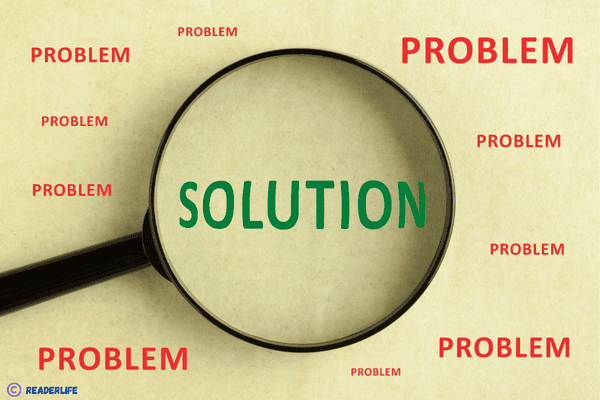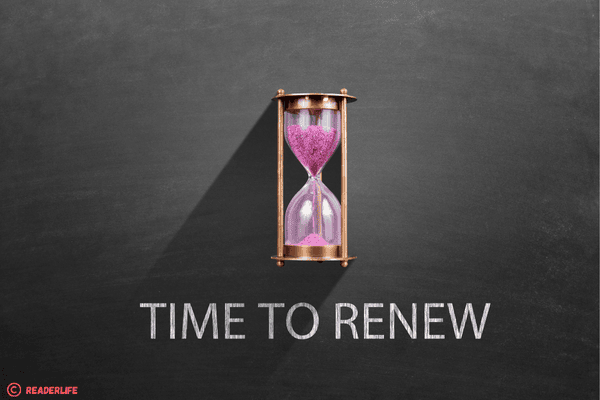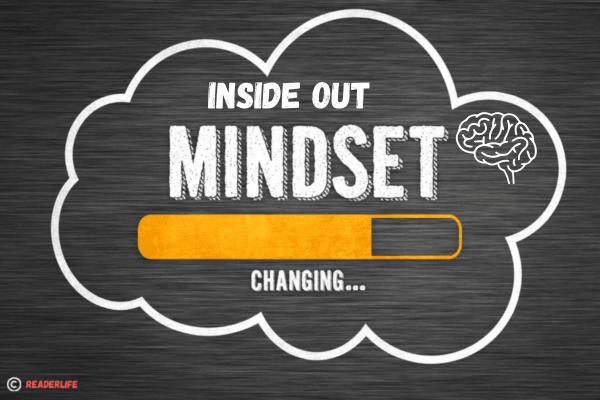Introduction: Why True Change Starts from the Inside Out
Many of us seek to solve problems by focusing on what we see on the surface. We may repair relationships with temporary agreements, adjust our personalities to gain approval, or seek validation by showcasing our skills. Yet, these solutions often fade away. The concept of “Inside Out” reminds us that real change begins within—true transformation springs from our thoughts, character, and perceptions, not from others or our appearances. Embrace the journey of inner growth for lasting change!
This concept is not merely a memorable phrase; it represents a profound truth: if we do not transform internally, our endeavours are unlikely to be effective. Let’s explore how this principle relates to personal growth, our professional paths, and our connections, enabling us to take control of our lives.
Table of Contents
1. The Principle of Inside Out
The Inside Out method emphasises character over personality, focusing on fundamental values rather than surface-level attributes. While personality may generate a positive impression in the short run, it is the essential character traits—such as reliability, accountability, and steadiness—that foster enduring relationships and lead to lasting success. This viewpoint emphasises the significance of cultivating and sustaining strong character as a means to achieve lasting accomplishments.
Envision a tree: while its leaves and blossoms may enhance its beauty for a time, a tree lacking strong roots cannot withstand harsh weather. This idea is also accurate for our lives. The Inside Out principle encourages us to cultivate the foundations of our character before anticipating the rewards of success.
2. Why Surface-Level Solutions Don’t Work

a) Short-term vs. Long-term Fixes
Superficial solutions only cover up deeper issues that require resolution. For example, if someone apologises but doesn’t honestly want to change, it might calm a conflict for a while. However, since the real problem isn’t addressed, it will likely resurface later. This creates a cycle of unresolved conflict and can damage trust. To truly resolve the issue, we must focus on addressing the root problems rather than just providing quick fixes.
b) The Illusion of Personality
Many people tend to prioritize personality over character, primarily because personality is more visible and easier to display—it reflects how we are perceived by others. However, without a solid foundation of trust and integrity, personality can falter when faced with challenges. The Inside Out principle encourages us to look beyond mere appearances and strive for authenticity in our interactions and relationships.
c) Escaping Responsibility
Blaming others, circumstances, or luck may seem easier when facing setbacks, but it hinders our personal growth. The Inside Out philosophy emphasizes that true strength comes from within. It encourages us to take responsibility for our actions, empowering us to create the lives we want and harness our inner potential for positive change.
3. Building Character from the Inside Out

a) Becoming Trustworthy Before Expecting Trust
To earn the trust of others, we must first become individuals deserving of that trust. This journey involves aligning our words with our actions and being reliable and steadfast in our promises. By embodying our values consistently, we build a credible foundation that others can recognize and believe in.
b) Responsibility and Contribution
In both our professional and personal lives, embodying a sense of responsibility, a helpful spirit, and a genuine willingness to contribute fosters an environment rich with freedom and acknowledgment. When we actively engage in supporting others and sharing our skills, we cultivate deep trust among our peers and family members. This, in turn, opens the door to greater independence and a myriad of opportunities, allowing us to grow and flourish in ways we may have never imagined. The more we invest in others, the more we create a community that values collaboration and mutual respect.
c) Developing Integrity
Integrity embodies the concept of staying true to our values and principles, even in moments when no one is observing our actions. It serves as a fundamental pillar of the Inside Out approach, intricately linking the essential elements of trust, responsibility, and consistency. Living with integrity means making choices that reflect our beliefs, fostering an environment where others can rely on us and expect us to act in alignment with our core commitments, no matter the circumstances.
4. Inside Out in the Workplace
a) Character Over Talent
Workplaces frequently celebrate individuals who showcase exceptional talent and skills. However, it’s essential to recognize that talent alone is not enough; without a strong foundation of character, that brilliance can soon dim. A person might excel in their technical abilities or creative prowess, but if they lack integral qualities such as honesty, the ability to collaborate effectively with others, and a strong sense of accountability, their potential to lead and inspire may remain unfulfilled. When achievements are grounded in trust and integrity, the recognition earned not only endures but also fosters a healthier and more productive work environment.
b) Contribution Leads to Freedom
Individuals who consistently engage in contributions extend beyond merely completing their tasks; they actively participate in shaping and enhancing the workplace culture. By fostering strong relationships and a positive environment, they cultivate a sense of community and collaboration. As a result of their efforts, these individuals naturally earn a greater degree of freedom and autonomy in their roles. Rather than seeking accolades or recognition, they draw it to themselves through their actions and influence. This illustrates the profound impact of adopting an Inside Out approach to work, where internal values and contributions resonate outwardly, creating a more dynamic workplace.
c) Positive Influence
Energy is a powerful force that flows and influences the atmosphere around us. When we consciously emit positive energy through our actions, such as offering assistance to others and maintaining an optimistic outlook, we contribute to the development of a vibrant and supportive work environment. In contrast, when we engage in complaining and nurturing negative thoughts, we can quickly diminish the morale of those around us and create a toxic atmosphere. Ultimately, the decision to foster a positive or negative energy in our surroundings starts from within ourselves, requiring self-awareness and intentional choices.
5. Inside Out in Relationships
a) Transform Yourself First
In the intricate dynamics of families and partnerships, there often exists a prevailing temptation to look outward and expect others to change. However, the Inside Out philosophy invites us to turn this notion on its head, emphasising that true transformation starts from within ourselves. By consciously altering our habits, adjusting our responses, and revitalising our energy, we set in motion a powerful ripple effect that can fundamentally enhance our relationships. As we evolve personally, the atmosphere around us shifts, prompting positive changes in those we interact with, ultimately leading to healthier and more fulfilling connections.
b) Positive Energy Over Negativity
Rather than nourishing feelings of anger or bitterness, cultivating patience, empathy, and kindness opens up a pathway for healing. When we consciously alter our mindset and approach, we transform the atmosphere around us, enabling a more positive dynamic to flourish. This shift in energy not only fosters understanding but also creates opportunities for connection and reconciliation.
c) The Continuous Process of Renewal
Relationships are dynamic and ever-evolving, never set in stone for eternity. The Inside Out approach reveals that personal and relational growth is an ongoing journey rather than a one-time event. Each day offers a fresh chance to reflect on how we engage with our loved ones, allowing us to continually adapt and enhance the ways we connect, support, and express our affection. By embracing this mindset, we can cultivate deeper bonds and make each interaction more meaningful.
6. Paradigm Shifts: The Core of Inside Out

Embarking on the Inside Out journey requires a transformation in perspective, shifting our focus from external circumstances to our inner beliefs and attitudes. This introspection fosters a deeper understanding of ourselves, promoting personal growth and empowering us to create meaningful changes in our lives for a more authentic and fulfilling experience.
a) From Blame to Responsibility
Transforming the mindset from “they need to change” to “what can I do differently?” creates a powerful shift in perspective. This simple change in phrasing invites new possibilities and opportunities for growth and understanding. Instead of focusing on the perceived shortcomings of others, it encourages introspection and personal accountability, fostering a more collaborative and open approach to relationships and challenges.
b) From Personality to Character
Instead of relentlessly pursuing the latest tactics to project confidence or persuade others, we focus on cultivating authenticity, building trust, and maintaining consistency in our interactions. This approach allows us to form genuine connections and foster deeper relationships that are rooted in honesty and reliability.
c) From Control to Influence
While we may not have the ability to dictate the actions or choices of others, we possess the remarkable capacity to impact their lives through the energy we exude, the consistency of our actions, and the example we set. This kind of influence transcends mere control; it resonates deeply, often leaving a more lasting impression. When we embody positivity, integrity, and unwavering commitment, we create an environment where others are inspired to reflect those qualities in their own lives.
7. Inside Out and Self-Renewal

The journey of Inside Out is an evolving process marked by continuous self-reflection and growth. It fosters personal development through deep introspection and offers moments of rejuvenation, allowing individuals to refresh their understanding of themselves and their experiences.
- Physical Renewal: Prioritizing health to better support others.
- Mental Renewal: Enhancing our understanding, education, and reasoning skills.
- Emotional Renewal: Cultivating patience, empathy, and resilience.
- Spiritual Renewal: Connecting with profound values and purpose.
Each form of renewal empowers us internally, ensuring that our external outcomes are sustainable.
9. Embracing Inside Out: Actionable Steps
Discovering the power of embracing the Inside Out philosophy can truly transform our daily lives! Here are some exciting and actionable steps to weave this mindset into everything we do:

- Reflect daily: Consider, “Am I acting based on character or just personality?”
- Keep commitments: Even minor promises strengthen trust.
- Practice empathy: Understand situations from others’ points of view.
- Respond thoughtfully: Take a moment before acting in difficult situations.
- Continuously renew: Dedicate time to growth physically, mentally, emotionally, and spiritually.
Also read: Life-Changing Lessons from The 7 Habits of Highly Effective People
Conclusion: The Power of Inside Out
Deep problems need deep solutions. Real change starts inside us. The Inside Out principle teaches us that we can’t ignore others; instead, we should focus on changing ourselves first. When we take responsibility, build our character, and share positive energy, our work, relationships, and lives naturally improve.
To live from the Inside Out, we must accept this hard truth: we cannot change others until we change ourselves. Once we start our journey of self-improvement, we don’t just solve problems—we grow beyond them.
Reference: The Seven Habits of Highly Effective People by Stephen R. Covey

